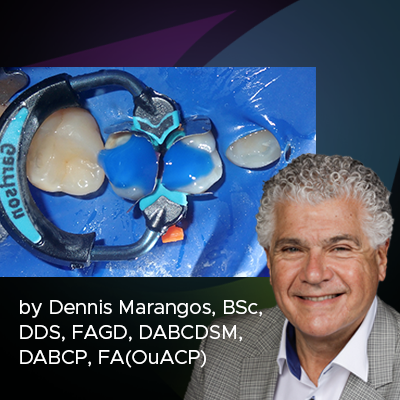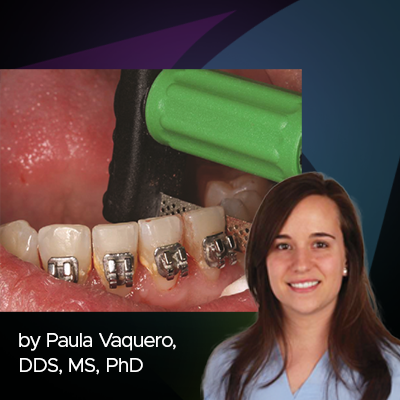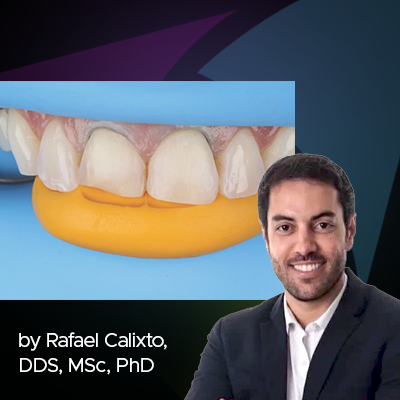
Shrinkage vs. Shrinkage Stress: What Does it Mean for Your Composite?
Originally published on The Brain Floss Blog
Do you know the difference between shrinkage and shrinkage stress and why it matters? While the two terms are often used interchangeably, they’re actually two very different outcomes of composite polymerization – and can drastically impact the success of your restoration.
Shrinkage
Just like a wool sweater shrinking in a hot dryer, composites will shrink during polymerization. This is the process whereby simple molecules called monomers combine to form larger, more complex molecules, or polymers. Depending on the monomers combined, the resulting product can have any number of unique physical properties, including strength or elasticity. However, polymerization can also have some unavoidable adverse outcomes.
For restorative composites, when the resin converts from a semi-liquid or paste to a solid, its density changes along with its overall volume – literally decreasing in size. Conventional materials shrink by about 1.5-5% during curing.

Shrinkage Stress
Imagine you’ve accidentally shrunk your favorite wool sweater. What would happen if you decided to keep wearing it? Beyond being uncomfortable and tight, the tiny sweater would take up less space physically – leaving gaps at your wrists, waist and in your closet.
That’s the fundamental difference between shrinkage and shrinkage stress. On its own, the shrunken sweater or polymerized composite is smaller and takes up less space – but on your body and in a cavity, it can cause a lot of discomfort. Shrinkage causes shrinkage stress, but they aren’t the same thing.
Shrinkage stress is the pressure put on the adhesive and surrounding tooth structure during the polymerization process. If this pressure exceeds the adhesive bond, or the strength of either the composite or tooth, it can cause a variety of problems, such as:
- Debonding resulting in internal or marginal gaps
- Fractures in the material and/or tooth structure
- Marginal staining
- Microleakage
- Secondary caries
- Postoperative sensitivity1-4

Why Knowing the Difference Matters
Composite resins will undergo some degree of volumetric shrinkage no matter what you do – but that doesn’t necessarily mean it has to impact the success of the restoration. Just as different clothing materials will react differently to a hot dryer, different composites experience shrinkage and stress differently.
Imagine you threw a pair of wool pants and a pair of spandex tights into a hot dryer and both items shrank the same amount. Which do you think would be more uncomfortable to try on? Because of the properties of the material, the spandex would stretch and put less stress on the body, while the stiffness of the wool pants would make them less forgiving and likely to burst at the seams. Similarly, flowable composites may shrink the same amount as a universal (or even more), but their low elastic modulus relieves polymerization stress.
That’s why it’s so important to not only know the difference between shrinkage and shrinkage stress, but also to pay attention to the properties of your composite. Selecting a low-shrinkage composite doesn’t necessarily guarantee less stress, just as buying pre-shrunk wool won’t guarantee a comfortable fit.

How to Cope
While polymerization shrinkage can’t be eliminated completely, there are a number of ways to reduce stress. However, many of these strategies, from layering to soft-start curing, are dependent on the properties of the composite.1-3 Traditional universal composites, for instance, require incremental placement to reduce shrinkage and stress – but this technique can also increase the potential for voids, poor adaptation and contamination from blood or saliva. Ultimately, reducing shrinkage stress comes down to choosing the right material, which should in turn simplify placement and cavity prep. For example, a modern bulk fill, such as 3M™ Filtek™ One Bulk Fill Restorative, eliminates the need for layering techniques and enables one-step placement because of its low-stress monomers and high depth of cure.

Conclusion
When performing composite restorations, polymerization shrinkage and shrinkage stress are inevitable – but they aren’t insurmountable obstacles. The more you know about how each impacts the tooth and success of the restoration, the better prepared you’ll be to find the best fit for each case.
REFERENCES
Soares, Carlos José et al. Polymerization shrinkage stress of composite resins and resin cements – What do we need to know?. Braz. oral res. [online]. 2017, vol.31, suppl.1, e62.
Alomari, Q. D., Barrieshi-Nusair, K. & Ali, M. Effect of C-factor and LED Curing Mode on Microleakage of Class V Resin Composite Restorations. European Journal of Dentistry 05, 400–408 (2011).
Malhotra, N., M, K. & Acharya, S. Strategies to Overcome Polymerization Shrinkage − Materials and Techniques. A Review. Dental Update 37, 115–125 (2010).
Polymerization Shrinkage – an overview. ScienceDirect Topics (2017).
About the Author

Timothy Dunbar, PhD
Timothy Dunbar was born and educated through high school in Pittsburgh, PA. He graduated Summa Cum Laude from Wheaton College (IL) with a B.S. in Chemistry in 1992. He received his Ph.D. in Physical Chemistry from The Pennsylvania State University in 1998. After completing a two-year post-doctoral research fellowship with Sandia National Laboratories (Albuquerque, NM), he was hired into 3M’s Corporate Research Materials Lab in 2000.
Since 2007, he has worked as a product developer for 3M Oral Care Solutions, with major contributions to products such as Filtek™ Universal Restorative, Filtek™ One Bulk Fill Restorative, Filtek™ Bulk Fill Posterior Restorative, Paradigm™ Nano Hybrid Universal Restorative, and Filtek™ Supreme Ultra Flowable Restorative. He has worked in the field of nanotechnology for over two decades and the field of color science for ten years.
Author of over fifteen publications and inventor of sixteen issued U.S. patents, Timothy resides in Woodbury, MN, with his wife and four children.
Discover More
This article was published in the Clinical Life™ magazine: Winter 2025 edition
Clinical Life™ magazine is a premier periodical publication by Clinical Research Dental Supplies & Services Inc. Discover compelling clinical cases from Canadian and US dental professionals, cutting-edge techniques, product insights, and continuing education events.
Subscribe to our emails to receive articles like this and be notified about our exclusive promotions.




